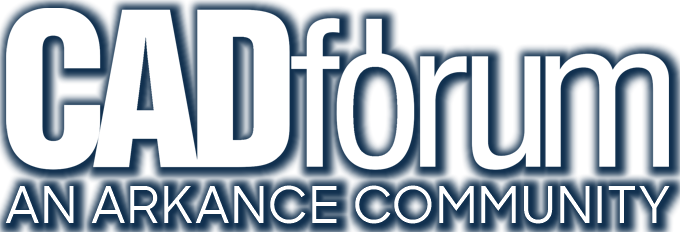 Discussion forum
Discussion forum
?CAD discussions, advices, exchange of experience
 CAD discussion forum - ask any CAD-related questions here, share your CAD knowledge on AutoCAD, Inventor, Revit and other Autodesk software with your peers from all over the world. To start a new topic, choose an appropriate forum.
CAD discussion forum - ask any CAD-related questions here, share your CAD knowledge on AutoCAD, Inventor, Revit and other Autodesk software with your peers from all over the world. To start a new topic, choose an appropriate forum.
Please abide by the rules of this forum.
|
Post Reply 
|
| Author | |
AliveInTheLab 
RSS robots 
Joined: 20.Nov.2009 Status: Offline Points: 425 |
 Topic: A Better World by Jon Pittman Topic: A Better World by Jon PittmanPosted: 24.Jul.2012 at 04:00 |
|
The Autodesk POV Dispatch is our internal newsletter, published monthly, where we discuss the big ideas that are important to us and our customers. It is published by our Corporate Strategy & Engagement (CS&E) team of which Autodesk Labs is a part. As I mentioned before (including yesterday), Jon Pittman is the VP of CS&E, so it should come as no surprise that Jon routinely makes submissions to issues of the POV Dispatch. Jon contributed this to a recent issue, and I thought I would share it with you. We've done a great job articulating how Autodesk's design tools help people imagine, design, and create. But what about that second half of our vision, about creating "a better world"? In many ways, this is one of the most compelling and important parts of the Autodesk vision. But are we really doing enough to help people imagine, design, and create a better world? To answer this question, first of all, we have to define what we mean by "a better world." There are many ways to define this. My view is that a better world is one in which everybody has both the opportunity and the means to achieve a high quality of life in a sustainable fashion. This includes a lot of big things--a sustainable environment, a peaceful world, elimination of poverty, and equity and justice for all. But it also includes a lot of more prosaic things, some of them further up Maslow's Hierarchy, such as productivity, creativity, engagement, and even fun. All of these are things that our customers can affect by imagining, designing, and creating great products, environments, and digital experiences. As a company, Autodesk is an ethically-minded company with a relatively small carbon footprint; this means we don't have bad corporate behavior to mitigate, and what we do have is a lot of opportunity to help our customers do good things for the world. Autodesk customers are wrestling with a wide variety of the big global challenges facing the world today--and one force creating an overall context for these challenges is globalization. Globalization has created a far more competitive world. This means our customers are pushed to continually innovate. This is good for the world because innovation is what propels a high standard of living and quality of life. Globalization also creates immense opportunities. The middle-class quality of life that so many of us enjoy is presently only available to the top billion of the world's seven billion people. Fortunately, globalization and innovation are--over time--bringing the "next six billion" up to a middle-class standard of living. The challenge is that the developed economies have a very energy- and resource-intensive lifestyle, one which is not sustainable for the world's emerging middle class to emulate. This means that the world as a whole needs to start to think and do things differently, which in turn means innovation. And that is something that Autodesk can help its customers do more of, and do better. Within the context of globalization, there are three big challenges for which we can help customers imagine, design, and create innovative solutions:
One of the reasons the global challenges described above exist in the first place is that people often think and act too narrowly. These are big, complex, and interdependent problems that require fresh thinking, systems approaches, new perspectives, and the ability to think and act broadly and holistically. Addressing all of these challenges require new mindsets, toolsets, and skillsets. A mindset for innovation is the ability for fresh thinking about problems and the willingness to challenge the status quo. Toolsets for innovation are Autodesk's sweet spot: our tools can help people visualize, simulate, and analyze solutions, and help them better understand the consequences of their design decisions. They can help teams communicate with each other and with their constituents. Our products and services can amplify people's creativity and ability to conceive new solutions. Finally, new skillsets are needed to address these complex challenges. We need people with the skills to deeply understand customer needs, frame problems correctly, and generate fresh new solutions to thorny problems. We can accomplish this by supporting and facilitating new approaches to education. Autodesk has a great opportunity to help our customers address these challenges, and therefore truly imagine, design, and create a better world. To date, we've focused more on the "imagine, design, and create" part of that idea, and less on the concept of a better world. It's true that we have had robust and successful programs in things like education and sustainability, and that we've done some great work in corporate philanthropy--but now it's time to amplify those initiatives and demonstrate through our actions that we are serious about helping our customers imagine, design, and create, not just in general, but specifically towards the goal of creating a better world. Thanks Jon. Amelioration is alive in the world. Go to the original post... |
|
|
It's Alive in ihe Lab - Autodesk Labs blog by Scott Sheppard
|
|
 |
|
Post Reply 
|
|
|
Tweet
|
| Forum Jump | Forum Permissions  You cannot post new topics in this forum You cannot reply to topics in this forum You cannot delete your posts in this forum You cannot edit your posts in this forum You cannot create polls in this forum You cannot vote in polls in this forum |
This page was generated in 0,115 seconds.
![CAD Forum - tips, tricks, discussion and utilities for AutoCAD, Inventor, Revit and other Autodesk products [www.cadforum.cz] CAD Forum - tips, tricks, discussion and utilities for AutoCAD, Inventor, Revit and other Autodesk products [www.cadforum.cz]](/common/arkance_186.png)









 A Better World by Jon Pittman
A Better World by Jon Pittman
 Topic Options
Topic Options


